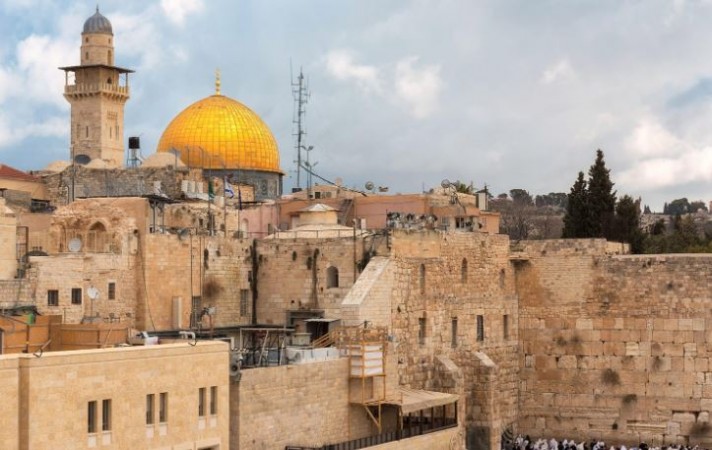
The history of Palestine is a complex and multifaceted narrative that spans thousands of years, deeply entwined with the intricate tapestry of cultures, civilizations, and political dynamics of the Middle East. The region, recognized by many as the birthplace of several major world religions, holds significant historical and cultural value. This article provides an overview of the history of Palestine, from ancient times to the modern state, examining the factors that contributed to its creation and its connection to the Kingdom of Israel.
Ancient Palestine
The history of Palestine can be traced back to ancient times when the land was inhabited by various peoples and empires. The region's significance is closely tied to its role in the biblical narrative, where it is mentioned as the Promised Land for the Israelites. In the 12th century BCE, the Israelites, led by figures like Moses and Joshua, are said to have settled in the region after their exodus from Egypt. This period is a significant part of the historical and religious identity of the region.
Palestine was later ruled by a succession of empires, including the Egyptians, Assyrians, Babylonians, Persians, Greeks, and Romans. During this time, it remained a melting pot of cultures, with Jewish, Christian, and later, Islamic influences, further shaping its historical character.
The Kingdom of Israel
The Kingdom of Israel, which included two separate entities—Israel in the north and Judah in the south—emerged in the 9th century BCE. These kingdoms were united under the reign of King David and his son, Solomon, who built the First Temple in Jerusalem. The Kingdom of Israel fell to the Assyrians in 722 BCE, leading to the exile of the ten northern tribes. The Kingdom of Judah persisted for some time but eventually fell to the Babylonians in 586 BCE. The Babylonian exile marked a significant event in the history of the Jewish people, and it left a lasting impact on their identity and religious beliefs.
Roman Rule and the Diaspora
Roman rule replaced the Babylonian empire, and the Romans referred to the land as "Judaea." During this time, tensions between the Jewish population and the Roman authorities culminated in the First Jewish-Roman War (66-73 CE). The Roman victory led to the destruction of the Second Temple in Jerusalem in 70 CE, a momentous event in Jewish history. The Jewish population was dispersed in the aftermath of these events, which is known as the Jewish Diaspora.
Byzantine, Islamic, and Crusader Periods
The Byzantine Empire succeeded Roman rule, and Palestine became part of the Byzantine province of Palaestina. The Byzantine period was characterized by the spread of Christianity and the construction of churches and monasteries.
In the 7th century, the region was conquered by Muslim armies during the Islamic expansion. Under Islamic rule, Jerusalem gained importance as the third holiest city in Islam. The Dome of the Rock and Al-Aqsa Mosque were constructed on the Temple Mount, further solidifying the city's significance.
During the Crusades, various Christian-European states established control over Jerusalem and its surroundings, and the region underwent several changes in power and sovereignty.
Ottoman Rule
From the 16th century until the aftermath of World War I, Palestine was part of the Ottoman Empire. This period saw an increase in Jewish immigration and the development of Jewish communities. By the late 19th century, a Zionist movement emerged, advocating for the establishment of a Jewish homeland in Palestine.
British Mandate and the Palestinian-Israeli Conflict
Following World War I, Palestine came under British administration in accordance with the League of Nations Mandate. The Balfour Declaration of 1917 expressed British support for the establishment of a "national home for the Jewish people" in Palestine, leading to increased Jewish immigration. The tension between Jewish immigrants and the Arab population grew, eventually evolving into a full-scale conflict.
The Partition Plan and the State of Israel
After World War II and the Holocaust, international support for the establishment of a Jewish state in Palestine increased. In 1947, the United Nations approved a partition plan that proposed dividing Palestine into separate Jewish and Arab states, with Jerusalem under international administration. While Jewish leaders accepted the plan, Arab leaders rejected it, leading to conflict.
On May 14, 1948, the State of Israel declared its independence, marking a turning point in the history of the region. The subsequent Arab-Israeli War and its aftermath significantly reshaped the borders and political landscape.
The history of Palestine is a story of continuity and change, shaped by the rise and fall of empires, religious transformations, and the dynamics of international politics. It is deeply rooted in the historical and cultural heritage of the Middle East. While the history of the Kingdom of Israel is a fundamental element of the region's past, the creation of the modern State of Israel in 1948 and the ensuing conflict have given rise to complex geopolitical realities and ongoing tensions in the region. Understanding this history is crucial for comprehending the challenges and complexities surrounding the Israeli-Palestinian conflict today.
The Israeli-Hamas Conflict: A Military Power Disparity
Israel Issues 3-Hour Deadline in Gaza as Tensions Escalate
Israel Voices Disappointment over China's Stance on Hamas Attack